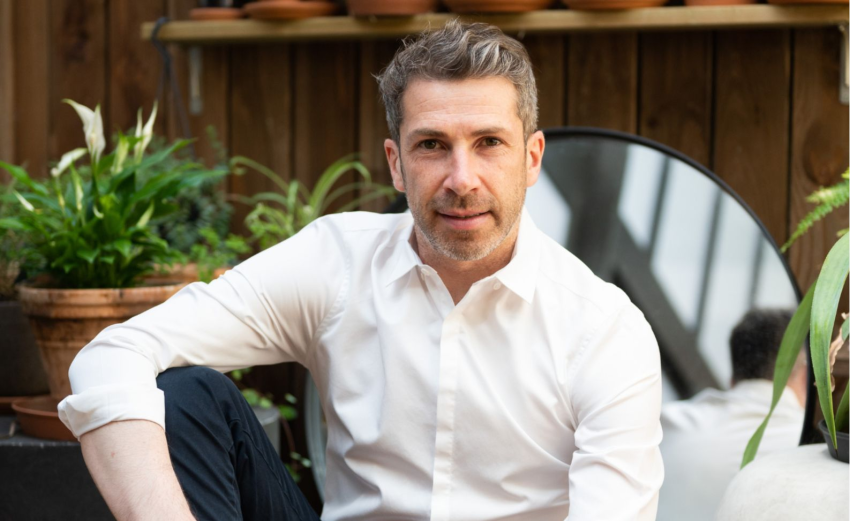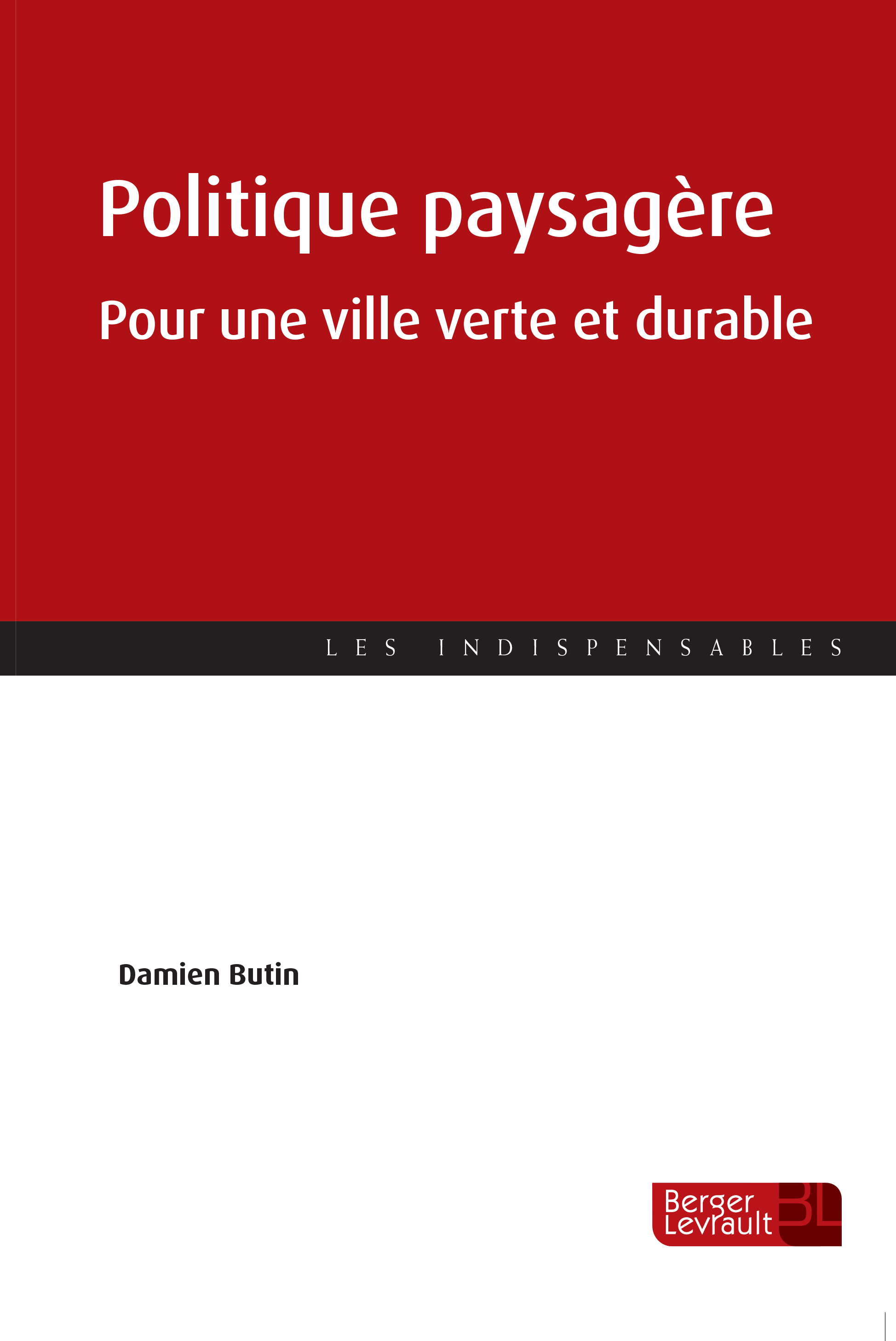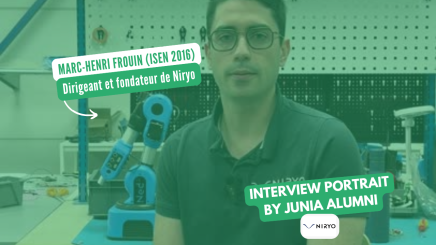News

Portrait of Damien BUTIN (ISA Paysage, 2008)
HELLO, can you briefly introduce yourself?
I'm Damien Butin, a landscape engineer who graduated from ITIAPE in 2008 (ISA - ITIAPE14). I've been working in the public sector for nearly 15 years, where I've held various positions of responsibility. I'm currently director of strategy and project management for natural heritage at the Bordeaux metropolis.
What's your best memory of your studies at JUNIA (HEI, ISA and ISEN Lille)?
Passionate about landscaping, I chose to join ITIAPE (ISA) because of its innovative teaching system, particularly in my day, through problem-based learning (APP), as well as its leading position among French landscape schools and the national landscape ecosystem.
This engineering training, right from the preparatory cycle, encourages us to take an active role in our studies, both individually, by building up our own knowledge, and collectively, by developing group work, which has been rich in terms of people and knowledge.
What's more, this school gives us the opportunity to go abroad during the 2nd year of the engineering cycle. So I was able to begin my discovery of the Scandinavian territories I'm particularly fond of by going to Iceland (Reykjavik). This experience was all the more beneficial and instructive because it was atypical.
It was also an excellent mission in Africa, and more specifically in Burkinafaso, to work on water and soil conservation issues, particularly in the context of North/South international relations. It was a flourishing experience on a human level, with the open-mindedness it fostered, as well as on a technical and professional level.
Last but not least, I made some unfailing friends, who are still with me 15 years later (I'm thinking of Gwenaël, Jérémie, Quentin, Ronan, Vivien and Xavier). If ITIAPE gave us the tools to train ourselves, structure our thinking and methods, and encourage us to take a step back, this training also enabled me to make valuable encounters, which count in both my personal and professional careers.
When you were studying, did you already know what you wanted to do and what job you were aiming for?
While all aspects of the landscape were obvious to me, my career path was less linear. When I arrived at ITIAPE, I was more interested in working in the private sector, but life led me to the public sector, in particular La Rochelle, which was my host organization and also a catalyst in my professional choice.
Step by step, I came to understand not only the values but also the missions of the local civil service, and the impact it can have on the landscape of a given region. It was at this point that I realized that if I wanted to play a part in shaping the morphology of a territory, this was the world I had to enter.
What has been your career path since graduating?
A few weeks after graduating, I joined the city of Bordeaux in 2008 as head of the landscaping department. I managed a team of project managers and had the singular mission of overseeing the development of the right bank quays (40ha). This objective was as challenging as it was galvanizing, especially at the age of 23 (I'd like to thank the Bordeaux administration and my various managers for giving me this opportunity and placing their trust in me). In 2016, I moved to the Bordeaux metropolitan area, where I held several positions as department manager. I was in charge of the landscape design office, and then added responsibility for the department's technical services, with varied teams ranging from large-scale earthworks, through works and planting teams, to teams of carpenters and metalworkers, for example. In 2019, I was promoted to Deputy Director of Bordeaux Métropole's Green Spaces Department, before taking over as head of the Natural Heritage Strategy and Project Management Department in 2022.
What are the main tasks in your job?
I'm in charge of managing Bordeaux Métropole's natural heritage strategy and project management department, which contributes to the long-term territorial vision of the Bordeaux conurbation.
This department supports structuring public policies relating to the ecological transition and environmental resources as a central department (Plantons 1 million d'arbres, flood prevention, etc.) as well as for the city of Bordeaux as a joint department (Bordeaux Grandeur Nature, food resilience, etc.) thanks to the various departments:
- Aquatic environment management and flood prevention (GEMAPI)
- Tree
- Nature in the city
- Landscape expertise and planning.
My main tasks are as follows:
- Participate in supporting and providing decision-support elements to elected officials (city & metropolis)
- Develop forward-looking visions, coordinate multidisciplinary teams in project mode and supervise the various departments;
- Structure the management of strategic and complex projects: [design and implement the territory's GEMAPI strategy for 2030 (120M: current management of 80km of dikes and 300km of waterways)], create or rehabilitate diking systems and hydraulic structures, create an ecological reserve, plant massively to respond to the climate emergency, develop structuring landscaped areas, create and manage compensatory measures, develop ecological management methods... ;
- Manage an average annual budget of 20 M ;
- Support change management, develop skills, manage resources, etc.
What role did your network (school, alumni association, family, professional) play in the development of your career?
ITIAPE is a catalyst for entry into the world of landscaping. In addition to the high quality of its training, which produces many of the landscape industry's best-known executives, it's also worth noting that landscape professionals are very close to the school and its students.
This close relationship opens up quality opportunities through companionship, where listening and sharing are real compasses. We're immersed in a world of enthusiasts, where opportunities for specialization from soil to plant are plentiful.
I can see the diversity of the positions my former classmates now hold; they are varied but all complementary (companies, design offices, local authorities, etc.). This diversity enriches both the training and the network, and constantly opens up new opportunities, in which innovation has a special place.
Do you have a message to get across?
First of all, I'd like to thank ITIAPE, whose founder, Pierre Baillon, worked with Michel Depond. I would also like to thank the teaching staff, including Pascal Gautier (director when I graduated), David Guillemant (my thesis director), Joceline Lanoy, Claire Tesnières, Jérôme Carel,... and also Christine Duport, Inès Blanckaert, Pauline Bioux, to name but a few. ITIAPE is a very rich, stimulating and formative training program... It's also the school of life.
Secondly, I'd like to thank all those involved in the landscape sector for the momentum they've created, both with regard to this training program and its students, and with regard to landscape and biodiversity, given the profound changes we're facing in terms of climate change and the decline in biodiversity.
Indeed, it's in the face of this tipping point facing our territories, reflected in episodes of heavy rain or increasingly extreme heat, that I've tried to formalize in a book the visions, methods and tools that could help meet the challenges of ecological transition.
I am therefore pleased to announce the publication on May 30th of my first book entitled "Politique paysagère, pour une ville verte et durable" (Landscape policy for a green and sustainable city), published by Berger-Levrault, whose 4th cover page reads as follows:
Over the course of history, landscape has often responded to distinct and controversial disciplines where the aesthetic and the artistic were paramount.
At a time when the planet is warming up, cities are being called upon to reinvent themselves, to combat the artificialization of land and to rebuild on themselves by planting. In this context, the status of the landscape is evolving: it is now recognized as a heritage to be preserved and developed, but also as a natural ecosystem with scientific implications, guaranteeing the future of the living world of which humans are a part.
As an object of public policy, the landscape is part of an organization in which biodiversity must permeate all areas of public intervention, so that territorial planning rhymes with resilience, environmental preservation and citizen well-being. This vision encourages public decision-makers to question existing paradigms and to reinvent the practices that landscape plans can describe as they reshape our territories with a view to ecological transition.
This book proposes a method for the global analysis of the "great landscape" and its ecology on the scale of a conurbation, proposing strategic orientations for evolution and transformation through an action plan. It then focuses on localized action through the realization of a nature park project based on the principle of renaturation.
Combating climate change and the loss of biodiversity, improving public health and developing social cohesion: these are the challenges that the inhabited areas of the 21st century must meet in order to adapt to these new risks.

















No comment
Log in to post comment. Log in.